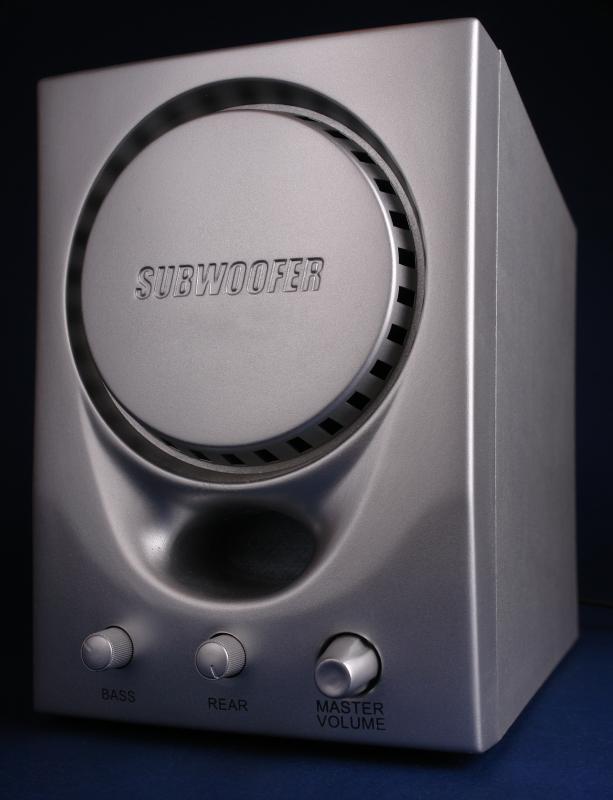At WiseGEEK, we're committed to delivering accurate, trustworthy information. Our expert-authored content is rigorously fact-checked and sourced from credible authorities. Discover how we uphold the highest standards in providing you with reliable knowledge.
What Are the Different Types of Custom Subwoofer Enclosures?
Custom subwoofer enclosures can be constructed of different materials, including particle board, medium density fiberboard (MDF), and fiberglass. The enclosure can also have a varied internal design, such as sealed, ported, or bandpass construction. In addition, custom subwoofer enclosures can also be constructed in different sizes based on the speaker's intended location, either in a vehicle or at home.
For those on a limited budget, particle board is an adequate material from which to construct custom subwoofer enclosures. Consumers should be aware that particle board is not as strong as fiberglass or MDF; the wood is also prone to splintering. The alternative to this weak wood is MDF. This fiberboard is much stronger for retaining the enclosure's structural integrity. Bass vibrations will sound clear and crisp, rather than having a rattling sound from weak enclosure walls.

Truly custom subwoofer enclosures are created from fiberglass. This material is a combination of fine glass threads and plastic polymers. Fiberglass is unique because it can be formed into almost any shape; as a result, enclosures can have curves and angles to fit into oddly-shaped spaces. Consumers should note that a do-it-yourself fiberglass enclosure requires a lot of messy work, including extensive sanding procedures. For these reasons, many choose to hire a professional fiberglass company to measure and construct their custom subwoofer enclosures.
The simplest enclosure type is the sealed box. As the title suggests, the box is completely closed off to the outside, except for a speaker opening. In contrast, a ported enclosure uses the same speaker opening, but has an additional aperture in the form of a tube behind the subwoofer. This tube connects the boxes' internal space with the outside to allow bass vibrations to emanate outward. Bandpass enclosure constructions are more complex since the design uses two separated spaces within one box to generate bass sounds.
Custom subwoofer enclosures are limited in size for vehicle installations. Smaller vehicles may only hold a sealed subwoofer box, whereas larger cars may have room for a ported box in the trunk. Home installations allow more flexibility in enclosure construction. The speaker can be as large as the consumer desires, including the enclosure design. The only limitation with enclosure sizing in a home is the use of floor space; most larger enclosures must be placed on the floor because of the heavy speaker and box weight.
Custom subwoofer enclosures can be made at home with simple tools. Particle board and MDF are easily cut with a power saw for the box construction. Consumers should make sure that the constructed box is nailed and glued properly to avoid irritating rattles while playing music.
AS FEATURED ON:
AS FEATURED ON:











Discuss this Article
Post your comments